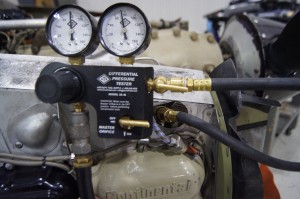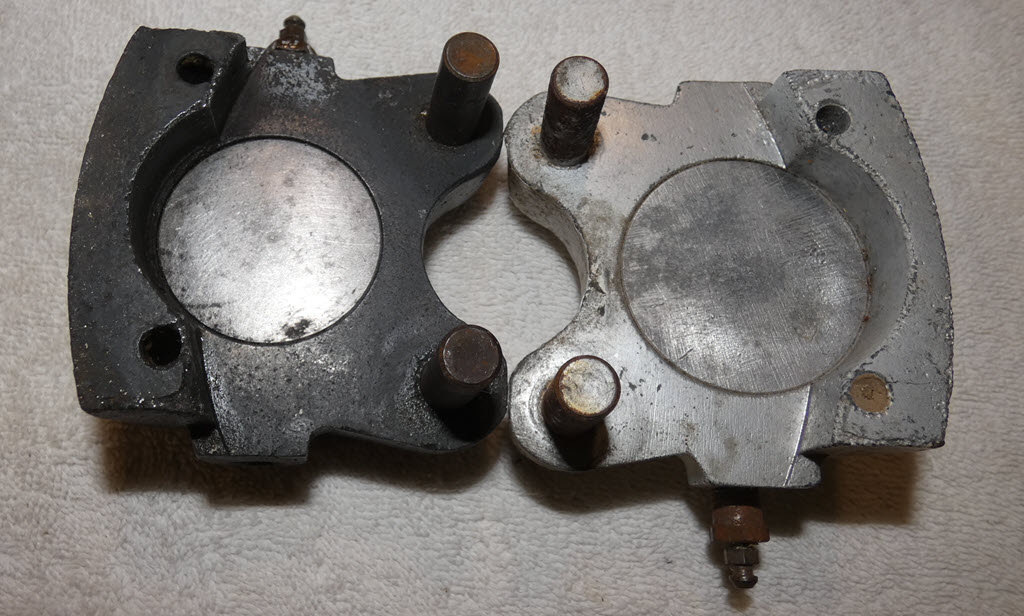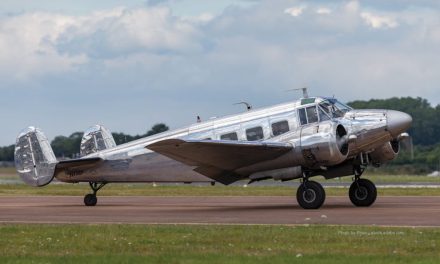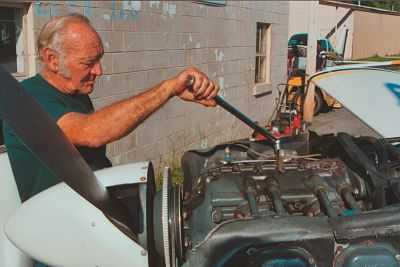W hat to Know BEFORE You Go
hat to Know BEFORE You Go
Sponsored by AirMart, Inc. – www.AirMart.com
Does that Continental Cylinder Really Need to Come Off?
Recently, I had a discussion with a Cessna SkyMaster owner who was 100% convinced that his mechanic made him replace 12 “perfectly airworthy cylinders.” Fortunately, I was not the mechanic in the crosshairs and was merely engaging in “hangar talk” with him.
Apparently, this all came about after a compression check on the SkyMaster’s two engines indicated that all cylinders were below, or right around, 60/80 psi. As it turned out, what really concerned the A&P in this case was where the cylinders were leaking, as he could hear air coming from the exhaust on most of the cylinders. Nonetheless, this conversation got me thinking about and revisiting what I know about compression checks. I can’t even begin to estimate how many 100s or 1000s of compression checks I’ve done; still, it’s a good idea to review the procedures occasionally.
When I was in A&P school in 1989, what they taught me was pretty straightforward: If the compression is below 60/80, reject the cylinder. If there is any leakage around a valve, reject the cylinder. In fact, many A&P’s still use these same criteria.
Now, back to the question posed in the title: Does this really mean the cylinders must come off? Let’s take a closer look.
First, some of you may not be familiar with the basic principles of a compression check. Basically, 80 psi of pressure is put into the cylinder with the piston positioned at top-dead-center. The amount of pressure lost due to leakage is measured using a special tool called a Differential Pressure Tester. This Tester has a regulator that regulates shop air to 80 psi. The air passes through a calibrated orifice and then into the cylinder. There is a pressure gage on each side of the orifice. If there is no leakage at all, the pressure will equalize at 80 psi on both sides. Of course, almost all cylinders have at least some leakage, so the pressure gage on the cylinder side will often read lower. So, a compression reading of 60/80 means the regulated air coming into the orifice is 80 psi, but a leakage is causing the pressure to drop to 60 psi on the other side of the orifice.
While the pressure is still on, the mechanic will also listen for “hissing” caused by the leak. If the sound is coming from the exhaust pipe, it’s an exhaust valve leak. Likewise, if it’s coming from the induction air inlet, it’s an intake valve leak. Hopefully, it’s coming from either the breather tube or from the oil filler (with the cap removed). This means the leakage is from around the piston rings.
So, why do so many A&Ps use the 60/80 minimum? There must be some document that specifies that, right? Well, to be honest, I had to go looking for it. Sure enough, there it is in 43.13-1B – Acceptable Methods, Techniques, and Practices Par 8-14.
If a cylinder has less than a 60/80 reading on the differential test gauges on a hot engine, and procedures in paragraphs 8-15b(5)(i) and (j) fail to raise the compression reading, the cylinder must be removed and inspected.
It’s hard to argue with an A&P if AC43.13 says to remove it if it’s less than 60, right? Okay, but let’s look at the opening paragraph in AC43.13-1B.
This advisory circular (AC) contains methods, techniques, and practices acceptable to the Administrator for the inspection and repair of non-pressurized areas of civil aircraft, only when there are no manufacturer repair or maintenance instructions.
This means that the manufacturer’s instructions take precedence over the FAA’s AC43.13-1B. For an engine manufactured by Continental, these instructions are spelled out in SB03-3, issued March 28, 2003. This SB supersedes their previous instructions in M84-15. SB03-3 is very interesting, and I believe most owners and many A&Ps have no idea what’s in it. If you own a plane, or if you’re an A&P working on Continental engines, you really should read this SB. If, like me, it’s been a few years, you should read it again. This SB spells out exactly how to perform the compression check and how to interpret the results.
To summarize SB03-3, here are some of the highlights.
- The compression test is a very useful tool to help determine the internal condition of cylinders, but it has limitations and must be used in conjunction with other non-invasive tests.
- A borescope inspection MUST be done in conjunction with a compression check. The A&P will look for burned valves, evidence of broken rings and excessively scored or worn cylinder walls. The SB gives some good guidelines to follow on this inspection.
- The A&P must also consider oil consumption, oil blow-by on the belly, and color of oil.
- The A&P should follow the procedure as spelled out in the SB to get the compression numbers.
- When determining the location of leaks, listen for exhaust and intake valve leaks, and piston blow-by at the oil filer. But also look for leaks caused by cylinder cracks at the sparkplug holes and in-between the aluminum cooling fins.
- 60/80 is never mentioned as a minimum! Instead, a master orifice is used to determine the minimum reading. (This is a different orifice than the one we talked about earlier.) The master orifice is temporarily attached to the Differential Pressure Tester outlet instead of the cylinder. Turn on the air and set the regulator to 80 psi. Whatever the outlet pressure gage reads is the minimum allowed by that specific tester. My Differential Tester’s minimum is around 45 psi. Each tester is a little different, but all the ones I’ve use have been in the 40s. So this means that when I do a compression test with my tester, the minimum allowed is 45/80!
- If the cylinder is above the minimum, it DOESN’T matter if the leak is coming from a valve. HOWEVER, if the borescope inspection shows problems (as spelled out in the SB), then it will need to be removed.
- If the cylinder falls below the minimum, DO NOT reject the cylinder immediately. The plane should be flown again for about 1 hour. If it’s still below the minimum, then it will have to be removed.
Again, this is a very simplified paraphrase of SB03-3. Its 14 pages long and you should read it.
What about the SkyMaster I mentioned in the opening paragraph? According to SB03-3, compressions below 60/80 and exhaust valve leaks do not necessarily require the cylinders to be pulled. However, the borescope inspection required by the SB must also be considered. If there is evidence of burned or over-temped valves, then yes, they do need to be pulled.
So, if your Continental engine has a low compression and the A&P wants to pull the cylinder, ask him if he followed the guidelines in SB03-3. Also, be sure he used a master orifice to determine the minimum and that he looked inside the cylinder with a borescope. There’s just no reason to pull cylinders if the manufacture says they still have some life in them.
What about Lycoming engines?
Service Instruction No. 1191A spells out the criteria for performing compression checks on Lycoming engines. Below is an excerpt from 1191A. As you can see, Lycoming views the issue very differently:
- Pressure readings for all cylinders should be nearly equal; a difference of 5 psi is satisfactory; a difference of 10 to 15 psi indicates an investigation should be made.
NOTE: Unless the pressure difference exceeds 15 psi the investigation should not necessarily mean removal of the cylinder; often a valve will re-seat itself and result in acceptable compression during a later check which should be made within the next 10 hours of operation.
- If the pressure reading for all cylinders is equal and above 70 psi; the engine is satisfactory; less than 65 psi indicates wear has occurred and subsequent compression checks should be made at 100 hour intervals to determine rate and amount of wear. If the pressure reading is below 60 psi or if the wear rate increases rapidly, as indicated by appreciable decrease in cylinder pressure, removal and overhaul of the cylinders should be considered.





